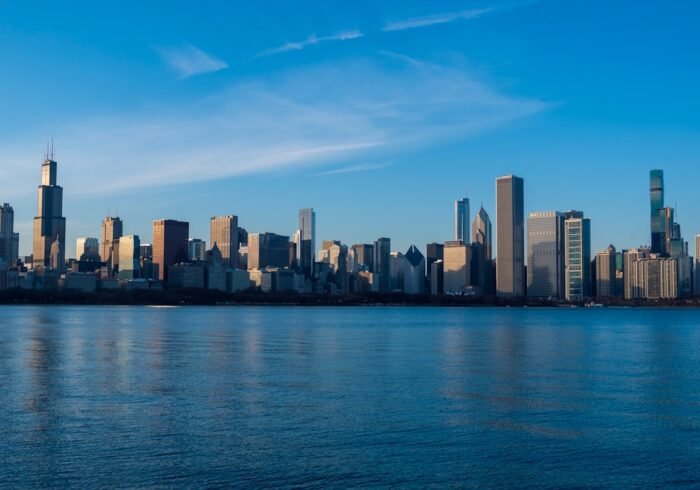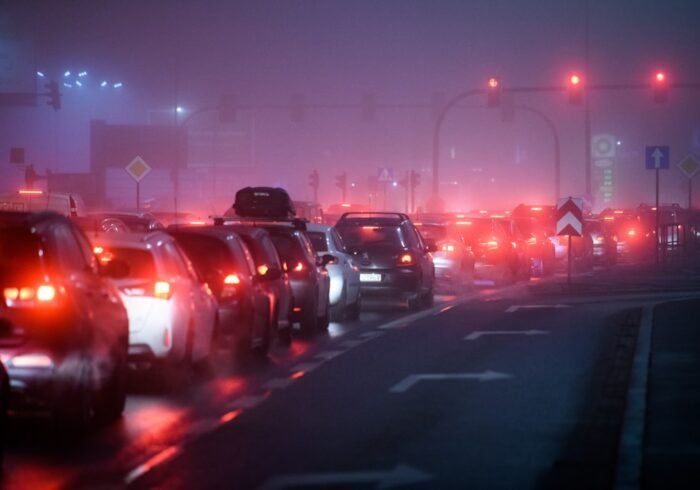An Extensive Overview of Asia’s Air Pollution Crisis Some of the world’s most densely populated cities are found in Asia, creating a serious problem with air pollution. The air quality in the area has been declining for decades, and it has now reached dangerously high levels. Cities like Delhi, Beijing, and Jakarta are regularly ranked among the most polluted in the world, per a number of studies. According to the World Health Organization (WHO), millions of premature deaths are caused by air pollution each year, with Asia accounting for a sizable share of these deaths. In addition to endangering public health, this crisis jeopardizes economic expansion and environmental sustainability.
Key Takeaways
- Asia’s air pollution crisis is a significant problem with far-reaching impacts on health and the environment.
- Air pollution in Asia has detrimental effects on respiratory health, cardiovascular health, and the environment, leading to increased mortality and economic costs.
- The sources of air pollution in Asia include industrial emissions, vehicular emissions, biomass burning, and coal-fired power plants.
- Government policies and initiatives, such as emission standards and clean air acts, are crucial in addressing air pollution in Asia.
- Industry and technology play a vital role in reducing air pollution through the adoption of cleaner production processes and the development of sustainable technologies.
Rapid industrialization & urbanization further compound the complexity of Asia’s air pollution problem. Countries frequently put growth ahead of environmental concerns as they work toward economic development. The combustion of fossil fuels, industrial discharges, and vehicle emissions have all increased as a result.
Also, topography and climate can trap pollutants in urban areas, exacerbating the issue. Developing effective strategies to combat this crisis and improve air quality throughout the continent requires an understanding of its scope. The effects of air pollution are far more severe than a minor annoyance; they endanger the environment and human health. Numerous health problems, such as respiratory illnesses, cardiovascular issues, and even neurological disorders, have been connected to exposure to polluted air. Due to the possibility of weakened or underdeveloped immune systems, children and the elderly are especially at risk.
The psychological effects are also noteworthy, as populations residing in highly polluted areas experience increased levels of stress and anxiety. Air pollution has serious negative effects on the environment in addition to health issues. It damages ecosystems and biodiversity by causing acid rain and increasing greenhouse gas emissions, which both contribute to climate change. Agriculture is also impacted by air quality deterioration because pollutants can land on crops, lowering yields and contaminating food supplies. Wildlife is also not immune; pollution-induced changes to their habitats have a negative impact on many species.
| Country | Population Affected | Major Pollutants | Health Impacts |
|---|---|---|---|
| China | Over 1 billion | PM2.5, sulfur dioxide, nitrogen dioxide | Respiratory diseases, cardiovascular problems |
| India | Over 800 million | PM2.5, ozone, carbon monoxide | Asthma, lung cancer, heart disease |
| Indonesia | Over 200 million | PM2.5, carbon monoxide, lead | Respiratory infections, stroke, lung diseases |
Because of their interdependence, these problems urgently require all-encompassing solutions that take into account the effects on the environment and human health. Finding the main causes of air pollution is crucial for effective mitigation. These sources can be broadly divided into several important categories in Asia, including household activities, industry, transportation, and agriculture. One of the biggest contributors is transportation, especially in cities where traffic jams cause more emissions from cars. The use of outdated automobiles that don’t adhere to current emissions regulations makes this problem worse.
Air pollution is largely caused by industrial activity as well. Without proper filtration systems in place, factories frequently release large amounts of pollutants into the air. Regulatory frameworks are frequently absent or inadequately implemented, enabling industries to function with little accountability. Agricultural activities that release large amounts of particulate matter into the atmosphere include burning crop residues.
Air pollution both indoors and outdoors is also a result of household activities, such as cooking and heating with solid fuels. Comprehending these sources is essential to creating focused interventions that can successfully lower emissions. The severity of the air pollution crisis is becoming more widely acknowledged by Asian governments, who are responding to it with a variety of policies and programs. In an effort to lessen the quantity of dangerous pollutants released into the atmosphere, several nations have imposed stronger emission regulations for automobiles and businesses.
For example, to reduce traffic and enhance air quality, Beijing and other cities have implemented policies like license plate-based vehicle restrictions. To encourage people to use cleaner forms of transportation, governments are investing in public transportation systems in addition to enacting regulations. Electric vehicle initiatives are also becoming more popular, with the goal of lowering the barrier to entry for the general public through subsidies and incentives. In addition, campaigns are being started to inform the public about the value of clean air and the actions they can take to help achieve this objective. Although there has been progress, strong enforcement mechanisms and public cooperation are frequently necessary for these policies to be effective.
Although it is a major source of emissions, the industrial sector has the potential to provide creative technological solutions, which contributes to the air pollution crisis. In order to reduce waste and emissions, many businesses are now investing in greener production techniques and technologies. Examples of how industries are shifting away from fossil fuels include the development of renewable energy sources like wind and solar.
These technologies enable industries to continue functioning while drastically lowering the amount of carbon dioxide released into the atmosphere. Vehicle emissions can be further reduced by optimizing traffic flow and reducing congestion through smart city initiatives that use data analytics. For sustainable practices to flourish, cooperation between researchers, governments, and industry leaders is crucial.
The effectiveness of neighborhood involvement in reducing air pollution. Activists: The Secret to Cleaner Air. Community involvement & grassroots initiatives are just as vital in combating air pollution as government regulations and technological advancements. Since local communities frequently suffer the most from the effects of air pollution, they are essential players in the battle for cleaner air. Across Asia, grassroots organizations are springing up to encourage people to support improved air quality through educational workshops, community clean-ups, and awareness campaigns.
enabling communities to act. These neighborhood-based projects enable people to take action. Local organizations might plan tree-planting campaigns or encourage eco-friendly behaviors like riding a bike or taking public transportation, for example. Through cultivating a feeling of responsibility for their surroundings, communities can produce a collective effect that supports more extensive government initiatives.
ensuring accountability for authorities. Engaging citizens encourages them to hold authorities responsible for enforcing effective policies in addition to increasing awareness. Asia’s air pollution problem calls for a coordinated, cross-border effort.
Sharing best practices, resources, and technologies that can effectively alleviate this crisis requires international cooperation. The United Nations Environment Programme (UNEP) is one organization that is actively collaborating with Asian nations to create regional air quality improvement plans. Partnerships between developed and developing countries can also help spread knowledge about sustainable practices & clean technologies. International organizations can also provide financial assistance to nations with limited resources so they can make the required reforms. Comprehensive frameworks that address air pollution’s root causes in relation to urban planning and economic development can result from cooperative efforts.
Individual actions are important in supporting clean air initiatives, but systemic changes are essential for addressing air pollution on a large scale. Making thoughtful decisions in their daily lives that help them lessen their carbon footprint is a good place for people to start. Vehicle emissions can be greatly reduced by taking easy steps like carpooling or taking public transportation rather than driving alone. Also, people can use LED lighting, cut back on water use, and, when feasible, choose renewable energy sources to implement energy-efficient practices at home.
Supporting neighborhood companies that put sustainability first can also have an impact; thanks to their purchasing decisions, customers can shape market trends. People can increase their influence beyond their own personal decisions by taking part in neighborhood clean-up campaigns or supporting regional environmental laws. In summary, the air pollution crisis in Asia is a complex problem that calls for an all-encompassing strategy involving communities, businesses, governments, and individuals. There is hope for a time when everyone living on this dynamic continent will have access to clean air, not just as an ideal, by realizing the extent of the issue and actively engaging in solutions at all levels.
One related article discussing the current environmental issues of rising temperatures, deforestation, and pollution can be found at this link. This article delves into the various factors contributing to environmental degradation in India and Asia, including air pollution. It highlights the urgent need for awareness and action to combat these pressing issues.



